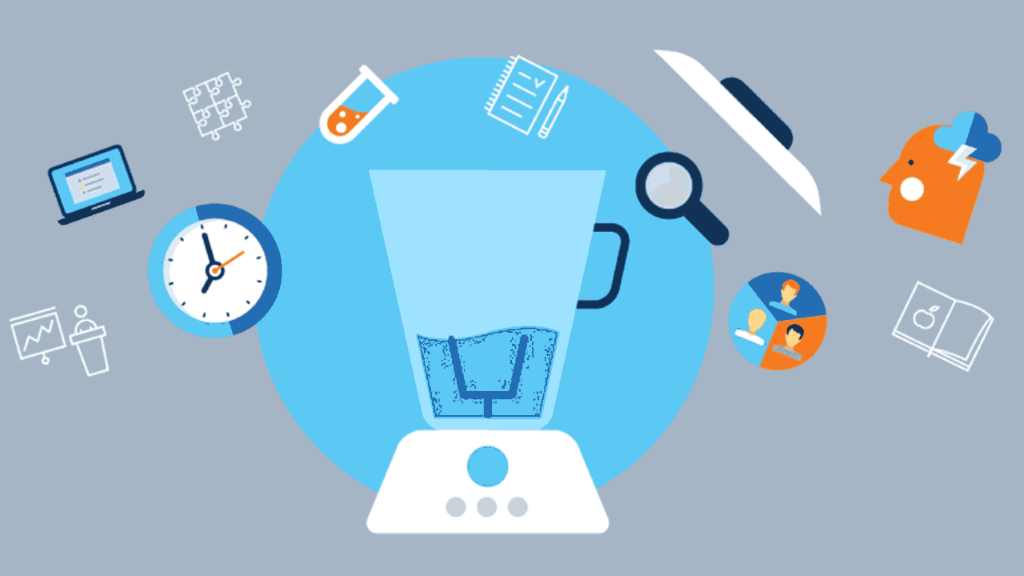In our rapidly evolving world, technology is at the forefront of driving change in various sectors, and education is no exception. Embracing the latest technological trends can revolutionize the way we teach and learn, opening up new possibilities for educators and students alike. Let’s explore five key technology trends that have the potential to shape the future of education.
In the digital age, staying abreast of technological advancements is crucial for educators aiming to provide an enriching learning experience. Technology trends in education encompass a wide range of innovations that can enhance engagement, accessibility, and overall learning outcomes.
Virtual Reality in Education
Immersive Learning Experiences
Virtual Reality (VR) is not just a gaming phenomenon; it’s transforming classrooms into immersive learning environments. Students can explore historical events, dive into the human body, or even conduct virtual experiments, breaking the limitations of traditional teaching methods.
Applications in Practical Subjects
From medical training to engineering simulations, VR is revolutionizing the teaching of practical subjects. Students can gain hands-on experience in a safe and controlled virtual space, enhancing their understanding and skills.
Overcoming Geographical Limitations
VR enables students to travel beyond the confines of their physical classrooms. With virtual field trips and global collaborations, geographical barriers become a thing of the past, providing a truly global learning experience.
Artificial Intelligence (AI) Integration
Personalized Learning Paths
AI in education tailors learning experiences to individual students. By analyzing their strengths and weaknesses, AI systems can create personalized learning paths, ensuring that each student progresses at their own pace.
AI-Driven Assessments
Traditional assessments are evolving with AI. Adaptive testing, where questions adjust based on a student’s performance, provides a more accurate measure of their understanding, allowing for targeted support where needed.
Adaptive Learning Platforms
AI-powered adaptive learning platforms continuously adjust content based on student responses, ensuring that the material remains challenging yet achievable. This fosters a dynamic and personalized learning environment.
Gamification in Learning
Enhancing Student Engagement
Gamification introduces game elements into educational content, making learning more interactive and enjoyable. Points, badges, and leaderboards motivate students, fostering a sense of competition and accomplishment.
Incorporating Game Elements in the Future of Education
Educational games are designed to align with curriculum objectives, combining entertainment with learning. This approach not only captivates students but also reinforces key concepts in a memorable way.
Measuring Progress Through Gamified Systems
Gamified systems provide real-time feedback on student progress. Teachers can track achievements, identify areas for improvement, and adjust their teaching strategies accordingly, creating a more responsive educational environment.
Online Collaboration Tools
Breaking Down Physical Barriers
Online collaboration tools transcend physical boundaries, allowing students to connect with peers and educators worldwide. Virtual classrooms and collaborative projects prepare students for a globally interconnected future.
Real-Time Collaboration and Communication
Through video conferencing, instant messaging, and shared documents, students can collaborate in real-time. This fosters communication skills and teamwork, essential in today’s interconnected and fast-paced work environments.
Facilitating Group Projects and Discussions
Online collaboration tools facilitate seamless group projects and discussions. Students can work together on assignments, share ideas, and engage in meaningful dialogues, enhancing their critical thinking and communication skills.
Internet of Things (IoT) in Education
Smart Classrooms and Connected Devices
The Internet of Things (IoT) transforms traditional classrooms into smart spaces. Connected devices, such as interactive whiteboards and wearable technology, create a more interactive and dynamic learning environment.
Real-Time Monitoring of Student Progress
IoT devices enable real-time monitoring of student progress. Teachers can track engagement, assess comprehension levels, and identify potential challenges, allowing for timely interventions to support student success.
Enhancing the Learning Environment
By automating routine tasks, IoT frees up valuable teaching time. Smart climate control, lighting, and other environmental factors contribute to a comfortable and focused learning environment.
The Role of Augmented Reality (AR)
Interactive Learning Experiences
Augmented Reality (AR) blends the virtual and physical worlds, creating interactive learning experiences. AR applications overlay digital information onto the real world, offering a new dimension to traditional teaching materials.
Applications in Various Subjects
From anatomy lessons with 3D models to historical tours with augmented reality guides, AR is diversifying teaching methods. It caters to various subjects, making complex concepts more accessible and engaging for students.
Bridging the Gap Between Virtual and Physical Learning
AR bridges the gap between virtual and physical learning by overlaying digital learning elements in the real world. This integration enhances understanding and retention, making learning more tangible and interactive.
Data Analytics for Educational Insights
Utilizing Data for Personalized Teaching
Data analytics in education involves analyzing student performance data to tailor teaching strategies. By understanding individual learning styles, educators can customize their approaches to meet the unique needs of each student.
Predictive Analysis for Student Success
Predictive analytics use historical data to identify patterns and predict future outcomes. In education, this can help anticipate challenges students might face and provide proactive support to enhance their chances of success.
Improving Overall Educational Strategies
Data-driven insights enable schools and educators to refine and optimize their overall educational strategies. Identifying areas of improvement and implementing evidence-based practices contribute to continuous improvement in the education system.
Cybersecurity Measures in Education
Protecting Student Data and Privacy
As technology becomes integral to education, safeguarding student data and privacy is paramount. Cybersecurity measures, such as secure networks and data encryption, ensure the confidentiality and integrity of sensitive information.
Safeguarding Against Cyber Threats
Educational institutions are susceptible to cyber threats. Implementing robust cybersecurity measures protects against data breaches, ransomware attacks, and other malicious activities that could compromise the educational environment.
Creating a Secure Online Learning Environment
With the rise of online learning, creating a secure environment is crucial. Authentication protocols, secure platforms, and user education contribute to a safe online space for both students and educators.
Mobile Learning and Apps
Accessibility and Convenience
Mobile learning brings education to the fingertips of students. With smartphones and tablets, learning becomes accessible anytime, anywhere, providing flexibility and convenience for diverse learning styles.
Learning On-the-Go
Mobile apps facilitate on-the-go learning, allowing students to engage with educational content during commutes, breaks, or any free moment. This flexibility accommodates the dynamic lifestyles of modern students.
Educational Apps and Their Impact on Student Learning
Educational apps cover a spectrum of subjects and skills. From language learning to interactive simulations, these apps enhance engagement and offer an alternative approach to traditional classroom learning.
Permanent Shifts in Education Delivery
The COVID-19 pandemic accelerated the adoption of remote learning. While it presented challenges, it also paved the way for permanent shifts in education delivery, emphasizing the importance of flexible and adaptable learning models.
Balancing Remote and In-Person Learning
The future of education lies in striking a balance between remote and in-person learning. Hybrid models offer the advantages of both, providing flexibility without compromising the benefits of face-to-face interaction.
Preparing Students for a Technology-Driven Future
As technology continues to advance, preparing students for a technology-driven future becomes paramount. Integrating digital literacy, coding, and critical thinking skills into the curriculum equips students for success in a rapidly evolving job market.
Challenges and Considerations
Addressing Equity Issues
While technology brings immense benefits, it also highlights disparities in access. Addressing equity issues ensures that all students, regardless of socioeconomic background, have equal opportunities to leverage technological advancements for learning.
Training Educators for Technological Integration
Effective implementation of technology in education requires well-trained educators. Providing professional development opportunities equips teachers with the skills and knowledge needed to integrate technology seamlessly into their teaching methods.
Ensuring Responsible and Ethical Use of Technology
As technology becomes more pervasive in the future of education, ensuring its responsible and ethical use is critical. Establishing guidelines and ethical frameworks helps maintain a positive and safe learning environment for students.
Success Stories and Case Studies
Highlighting Institutions Embracing Technology Successfully
Numerous institutions worldwide have successfully integrated technology into their educational practices. Case studies showcase how technology positively impacts student engagement, learning outcomes, and overall educational experiences.
Showcasing Positive Impacts on Student Outcomes
Success stories highlight the positive impacts of technology on student outcomes, including improved academic performance, increased motivation, and enhanced critical thinking skills. These real-world examples inspire others to embrace technological advancements in education.
Inspiring Others to Adopt Technological Advancements
By sharing success stories, institutions can inspire others to adopt technological advancements in education. The transformative power of technology is evident in these cases, encouraging a widespread shift towards innovative and effective teaching methods.
Conclusion
In conclusion, the future of education is intricately linked with technological advancements. Embracing virtual reality, artificial intelligence, gamification, online collaboration tools, the Internet of Things, augmented reality, and data analytics can revolutionize the learning experience. These trends not only enhance engagement but also prepare students for a tech-driven future, fostering a dynamic and adaptable education system.
FAQs
Q: What are the potential drawbacks of relying heavily on technology in education?
A: While technology offers immense benefits, drawbacks may include increased screen time, the potential for distractions, and the risk of exacerbating existing inequalities in access to technology.
Q: How can schools ensure equal access to technology for all students?
A: Schools can address this issue by implementing equitable technology distribution, providing financial assistance, and offering digital literacy programs to bridge the gap in access.
Q: Are there any privacy concerns associated with the use of AI in education?
A: Privacy concerns include the collection of sensitive student data. Implementing strict data protection policies and ensuring transparency in AI applications can mitigate these concerns.
Q: What steps can educators take to stay updated on the latest technology trends?
A: Educators can attend professional development workshops, join educational technology communities, and regularly engage with reputable publications and conferences to stay informed.
Q: How can technology address the diverse learning needs of students?
A: Technology allows for personalized learning paths, adaptive assessments, and diverse educational apps, catering to different learning styles and abilities.








